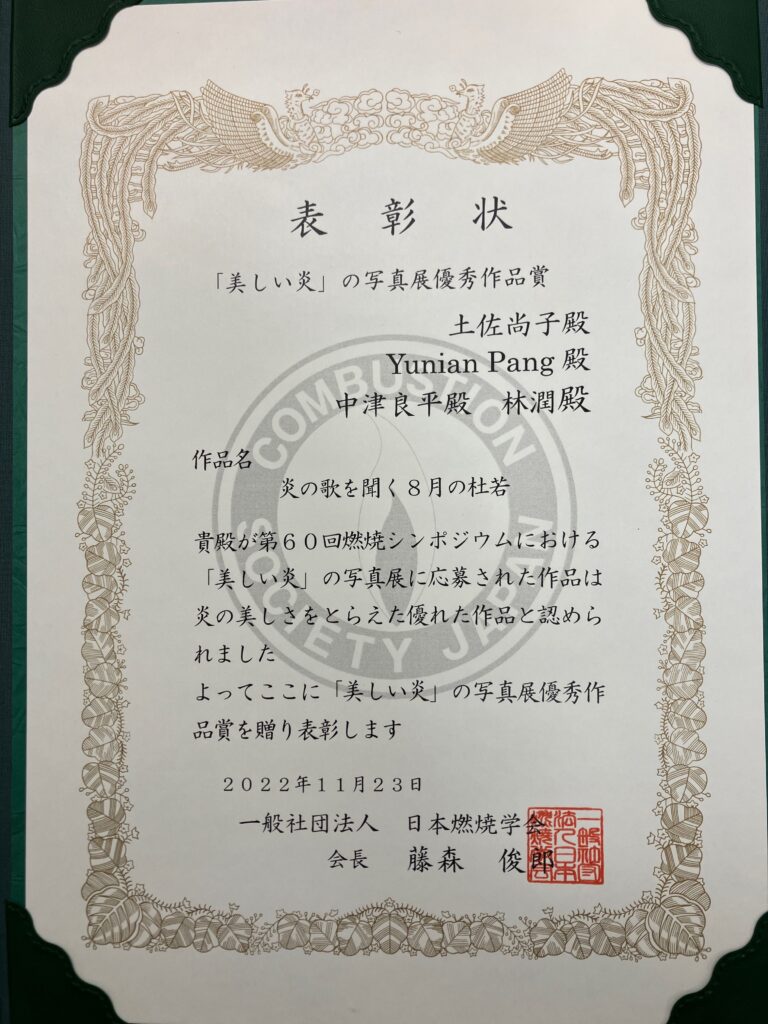
1.応募者氏名
土佐尚子1・Yunian Pang1・中津良平1・林 潤2
TOSA, Naoko1, PANG, Yunian1, NAKATSU, Ryohei1, HAYASHI, Jun2
2. 応募者所属
1京都大学 防災研究所巨大災害研究センター アートイノベーション産学共同研究部門
Art Innovation Tosa Laboratory, Disaster Prevention Research Institute, Kyoto University
2京都大学 エネルギー科学研究科 エネルギー変換科学専攻
Energy Conversion Science, Department of Energy Science, Kyoto University
3. 連絡先
京都大学大学院エネルギー科学研究科エネルギー変換科学専攻
〒606-8501 京都市 左京区吉田本町
TEL: 075-753-3302
4. 作品名
『炎の歌を聞く8月の杜若』/『August iris flower listening to the song of flame』
5. 作品の簡単な解説
写真には,流路内の定在波によって火炎長が変化するメタン/空気拡散火炎列の様子(Rubens tube)が映し出されている.噴出孔の位置を軸に上下/左右反転画像を作成し,上下に火炎列を並べることで,定在波の圧力分布に対応する火炎長の変化を強調した.写真右側には,バリア放電を纏った杜若(かきつばた)を配置している.これは,炎の歌を聞く8月の杜若であり,エネルギーの美しさを表現している.火炎列形成に用いたバーナは,約1 mの矩形流路を持ち,燃料供給側と反対側には薄いゴムシートおよびスピーカを配置している.供給する音の周波数を650 Hzから960 Hzとすることで,美しい波状の火炎列を可視化することができる.バリア放電を纏った杜若は,アクリル水槽と杜若の間に最大約 32 kV, 周波数7 kHzの正弦波を供給することで得た.
The photograph shows a train of methane/air diffusion flames with a different flame length derived by the standing wave in the flow channel (Rubens tube). Vertical/horizontal flipped image was overlaid to emphasize the corresponding to pressure distribution of the standing wave and the flame length. On the right side of the image, an iris flower with barrier discharge is placed. An august iris flower, which is listening to the song of flame, expresses the beauty of energy. The burner used for this photo has a rectangular channel of approximately 1 m. The speaker with a thin rubber sheet was placed on the opposite side of the fuel inlet. The frequency of the sound from 650 Hz to 960 Hz can show a beautiful waveform of the diffusion flame train. The barrier discharge on the iris is obtained by supplying a sine wave with a maximum voltage of 32 kV and 7 kHz between the water-filled acrylic tank and the iris flower.